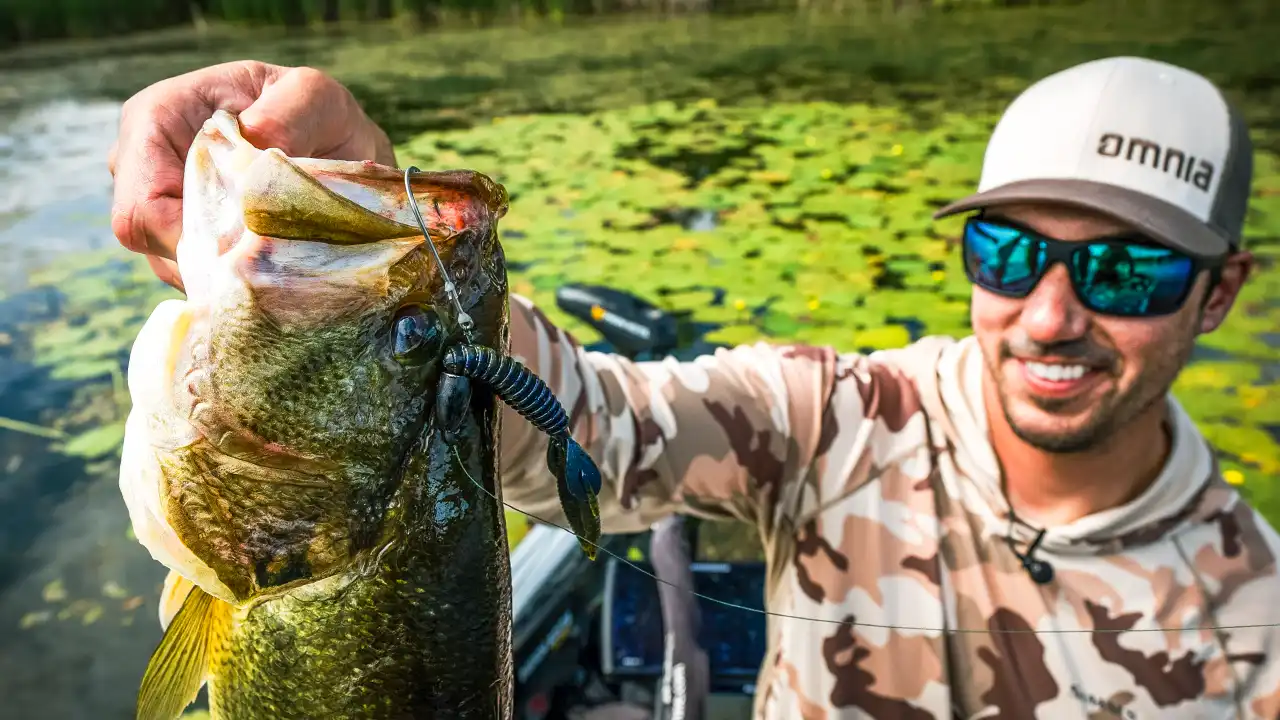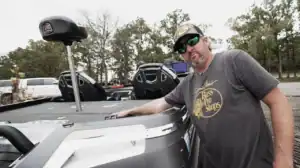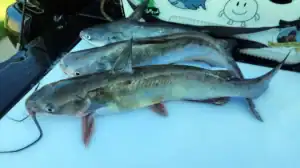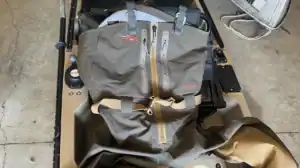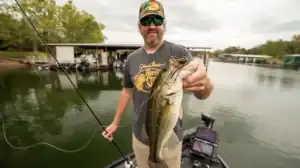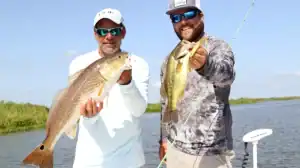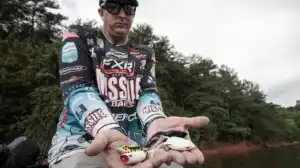Most anglers have encountered it — an expanse of lily pads that has you scratching your head about where to start looking. Well, we have the answer. Pro bass angler Bob Downey shares his methodology for bass fishing lily pads, which starts with finding them. Downey teaches how to identify the highest percentage areas of lily pad beds and the best rod setup and tackle for fighting bass out of the jungle.
TACKLE USED (retail links)
- HOOK – VMC RedLine Heavy Duty Flippin’, 4/0: Buy at Omnia Fishing, Buy at Bass Pro Shops
- PLASTIC – Reaction Innovations Sweet Beaver: Buy at Omnia Fishing, Buy at Tackle Warehouse
- WEIGHT – VMC Tungsten Flippin Weight, 3/4- to 1-ounce: Buy at Omnia Fishing, Buy at Tackle Warehouse
- PEG – VMC Sinker Stops: Buy at Omnia Fishing, Buy at Bass Pro Shops
- ROD – St. Croix Legend Tournament Bass Casting Rods, 7’6” Heavy/Mod-Fast: Buy at Omnia Fishing, Buy at Tackle Warehouse
- REEL – Daiwa Tatula Elite, Pitching / Flipping: Check out at Daiwa
- LINE – Sufix 131 Braided Line, 50-pound: Buy at Omnia Fishing, Buy at Bass Pro Shops
KEY INSIGHTS AND TECHNIQUES
- Isolation is King: Downey notes that targeting isolated chunks of lily pads can boost your chances of encountering fish during the heat of summer. Such isolated patches function similarly to fishing isolated wood or grass patches on vast flats.
- Where to Aim: According to Downey, while extensive lily pad patches, equivalent to the size of a football field, do harbor fish, they present challenges in locating the precise spots. Opting for isolated patches can make the task more manageable, akin to fishing a remote patch of grass amid a vast flat.
- Revisit the Catch Spot: Downey emphasizes the importance of casting repeatedly into a spot where you’ve contacted a fish. The rationale? There’s usually more than one fish in that location, drawn there for reasons such as sheltered hollows under the pads or the presence of baitfish.
DOWNEY’S EQUIPMENT BREAKDOWN
- A 3/4 ounce to an ounce tungsten flipping weight
- A bobber stop to peg the weight and a 4/0 straight shank flipping hook
- A beaver-profile bait with minimal appendages for efficient penetration through and out of the grass
- A smooth (equates to quiet) 50-pound braid
- A medium-heavy to heavy power moderate fast rod to drive hooks home and keep bass buttoned
- A high-speed reel with large handles for winching bass from heavy cover
SPOTTING THE IDEAL PATCHES
Downey found that isolated lily pad patches consistently proved to be the high-percentage areas in an expansive bay replete with matted grass. These patches often provide a clear canopy beneath, making them optimal feeding zones. Downey points out edges, points, and inside turns where vegetation types transition are good starting points when confronted with vast stretches of intimidating vegetation.
BOAT & ELECTRONICS
- LIVE SONAR – Humminbird MEGA Live Transducer: Buy at Omnia Fishing, Buy at Bass Pro Shops
- 360 SONAR – Humminbird MEGA 360 Imaging: Buy at Omnia Fishing, Buy at Bass Pro Shops
- FISH FINDER – Humminbird HELIX 12 MEGA SI+ G4N: Buy at Omnia Fishing, Buy at Bass Pro Shops
- BOAT – Bass Cat Eyra: Check out at Bass Cat
- TROLLING MOTOR – Minn Kota Ultrex MSI+, 52”, 36v (112 lbs): Buy at Omnia Fishing, Buy at Bass Pro Shops
- MAPPING – Humminbird LakeMaster VX Digital GPS Maps, Minnesota V1: Buy at Omnia Fishing, Buy at Humminbird
